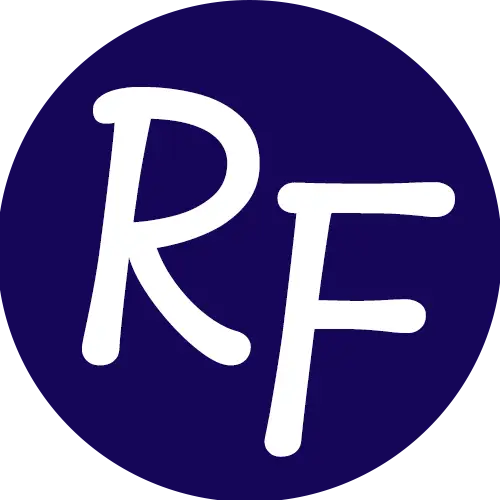In today’s fast-paced business environment, automation has become a cornerstone of operational efficiency and innovation. Among the various automation technologies, Robotic Process Automation (RPA) and Intelligent Automation (IA) stand out as transformative tools, each offering unique advantages to organizations looking to streamline processes, reduce costs, and improve accuracy. While RPA and IA share some similarities, they cater to different needs and use cases, making it essential for businesses to understand their differences and how they can complement each other.
Understanding Robotic Process Automation (RPA)
RPA is the entry point for many organizations on their automation journey. It involves using software bots to automate repetitive, rule-based tasks that were traditionally performed by humans. These tasks often include data entry, form filling, and system integration, among others.
RPA’s primary strength lies in its simplicity and ease of deployment. Businesses can quickly implement RPA solutions to address specific pain points without significant changes to their existing IT infrastructure. For instance, UiPath, Automation Anywhere, and Blue Prism are leading RPA vendors that offer robust platforms capable of automating tasks across a wide range of applications.
Key Benefits of RPA:
• Quick Deployment: RPA can be deployed rapidly, delivering fast ROI.
• Scalability: Organizations can scale RPA solutions across departments with ease.
• Accuracy: Bots reduce the risk of human error in repetitive tasks.
Introducing Intelligent Automation (IA)
While RPA focuses on automating routine tasks, Intelligent Automation (IA) takes things a step further by integrating artificial intelligence (AI) technologies such as machine learning, natural language processing (NLP), and computer vision. IA enables automation of more complex processes that require decision-making, learning, and adaptation.
IA combines the strengths of RPA with cognitive capabilities, allowing businesses to automate tasks that involve unstructured data, predictive analytics, and even customer interactions. Vendors like IBM, Microsoft, and Pega are at the forefront of IA, offering platforms that leverage AI to handle intricate tasks that go beyond the capabilities of traditional RPA.
Key Benefits of IA:
• Enhanced Decision-Making: IA can analyze data and make decisions, improving efficiency.
• Flexibility: IA adapts to new data and changing conditions, making it more versatile.
• End-to-End Automation: IA enables automation of complex processes from start to finish.
RPA vs. IA: Complementary Forces
RPA and IA are not mutually exclusive; in fact, they complement each other perfectly. While RPA is ideal for automating high-volume, repetitive tasks, IA is suited for more complex processes that require cognitive capabilities. Together, they can drive significant improvements in efficiency, accuracy, and scalability.
For example, an organization might use RPA to handle repetitive data entry tasks, freeing up employees to focus on higher-value activities. Simultaneously, IA can be used to automate more complex processes, such as analyzing customer feedback and making real-time adjustments to marketing strategies.
Key Vendors Leading the Way
Several vendors provide comprehensive solutions that encompass both RPA and IA, allowing businesses to leverage the strengths of each technology:
1. UiPath: Known for its powerful RPA platform, UiPath also integrates AI capabilities, such as document understanding and machine learning models, enabling more intelligent automation.
2. Automation Anywhere: This vendor offers a strong RPA foundation combined with cognitive automation features like IQ Bot, which processes unstructured data and learns from it.
3. Blue Prism: Blue Prism’s Digital Workforce combines RPA with AI, providing a comprehensive platform for end-to-end process automation.
4. Microsoft Power Automate: Part of the Microsoft Power Platform, Power Automate includes RPA features alongside AI Builder, which enables the integration of AI models into workflows.
5. IBM: IBM’s Cloud Pak for Business Automation offers both RPA and IA capabilities, powered by IBM Watson’s AI, to automate complex decision-making processes.
6. Pega: Pega’s intelligent automation platform combines RPA with AI-driven decisioning and predictive analytics, making it ideal for automating complex, end-to-end processes.
Conclusion: Embracing the Future of Automation
As organizations continue to navigate the complexities of digital transformation, understanding the roles of RPA and IA becomes crucial. By leveraging these technologies, businesses can achieve unprecedented levels of efficiency, accuracy, and innovation. Whether you’re just starting with RPA or looking to integrate more advanced IA capabilities, the key is to align your automation strategy with your business goals.
Leading vendors like UiPath, Automation Anywhere, Blue Prism, Microsoft, IBM, and Pega offer the tools you need to embark on this journey, ensuring that your organization stays competitive in an increasingly automated world. Embrace the power of RPA and IA, and unlock the full potential of your business processes.
Sources:
• UiPath https://www.uipath.com/
• Automation Anywhere https://www.automationanywhere.com/
• Blue Prism https://www.blueprism.com/
• Microsoft Power Automate https://flow.microsoft.com/
• IBM https://www.ibm.com/automation
• Pega https://www.pega.com/
Further Reading:
For those interested in diving deeper into the world of automation, here are some valuable resources:
1. “Robotic Process Automation: A Primer” by Gartner – A comprehensive guide on the fundamentals of RPA and its impact on business processes. Gartner RPA Primer
2. “Intelligent Automation: Welcome to the AI-Powered Future” by Deloitte Insights – An insightful article that explores the intersection of RPA and AI, and how it’s transforming industries. Deloitte Intelligent Automation
3. “RPA vs. Intelligent Automation” by Forrester Research – A detailed comparison of RPA and IA, highlighting their strengths, use cases, and future trends. Forrester RPA vs. IA
4. “The Future of Automation: Combining RPA and AI” by McKinsey & Company – An article that discusses the future potential of combining RPA with AI and how it can drive business growth. McKinsey on Automation
5. “Digital Transformation through Automation” by PwC – A report on how automation technologies are reshaping business models and enabling digital transformation. PwC Digital Transformation
These resources provide in-depth analysis and case studies, helping you better understand how RPA and IA can be leveraged to optimize business operations.





